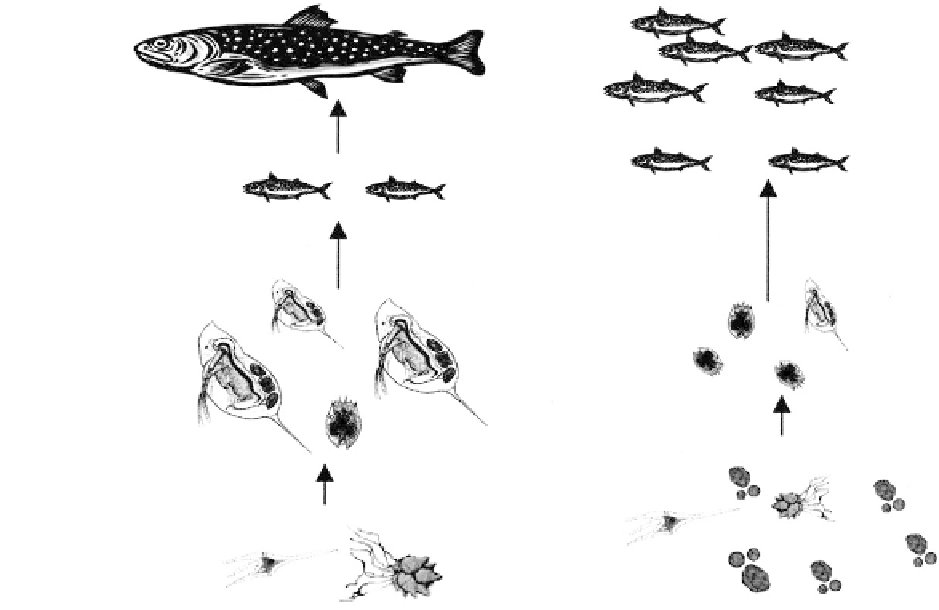Environmental Engineering Reference
In-Depth Information
FIGURE 19.8
A conceptual diagram of the trophic cascade in the pelagic zone of lakes.
When large piscivores are present, smaller zooplanktivores are uncommon, body size and
numbers of zooplankton increase, and phytoplankton decrease.
populations of larger fish that consume zooplanktivores. This leads to in-
creases in large grazing zooplankton (i.e., average body size of zooplank-
ton increases). The large grazing zooplankton can consume more phyto-
plankton. Consequently, there is an increase in water clarity related to a
decrease in suspended algae. Food web manipulation in concert with nu-
trient control can lead to significant increases in water quality over decades,
as has been demonstrated in Lake Mendota, Wisconsin (Lathrop
et al.,
1996). However, the approximately 10 decades of research on Lake Men-
dota illustrate that bottom-up and top-down conditions must both be con-
sidered as factors influencing water quality (Kitchell and Carpenter, 1992).
The key issue in propagation of bottom-up or top-down effects in lakes
seems to be the zooplankton-phytoplankton link (Carney, 1990; Elser
et al.,
1990; Elser and Goldman, 1991), although the trophic cascade may also
break down between zooplankton and fish (Currie
et al.,
1999). Empirical
analysis suggests the grazer link is where top-down and bottom-up effects
are decoupled (Brett and Goldman, 1997). In oligotrophic lakes, nutrients
may be so limiting that top-down effects cannot occur (Spencer and Ellis,
1998). In highly eutrophic lakes, large, grazer-resistant cyanobacterial
colonies can dominate, leading to lack of grazer control on phytoplankton
and decoupling of top-down effects from the bulk of primary producers.

Search WWH ::

Custom Search